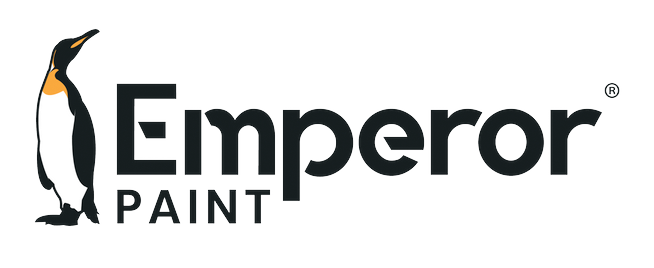
Water ingress is an increasingly prominent problem in the UK today. But what is water ingress, what causes it & what solutions are there available to treat it? Our team of experts cover all of these points and more in this our ultimate guide to water ingress.
Water Ingress Meaning
Firstly, let's establish what exactly water ingress is. Water ingress is the movement of moisture from the external environment into a building. No matter the cause, any water ingress is not good for the health of your home. This moisture can cause damp, damaged brickwork & health problems, so it is essential that it is treated at source at the earliest possible instance.
What Causes Water Ingress?
Water ingress is caused by moisture entering the property. While there are common areas of water ingress, there are a broad range of potential causes that may vary on a case-by-case basis. The most sources of water ingress are:
- Ageing brickwork - as bricks age they become more prone to moisture ingress, which can lead to them up taking large amounts of moisture. Having said this, all exterior walled surfaces such as brick, stone, concrete & render will uptake some level of moisture as they are porous.
- Damaged brickwork - when moisture enters brickwork, it can undergo a freeze-thaw cycle which leads to the moisture expanding, which in turn leads to cracks appearing in the brickwork. Any damaged pointing or cracks in bricks will be a big problem that will only worsen as more moisture enters each time.
- Roofs - damaged roofs that may have tiles missing can be susceptible to moisture.
- Blocked gutters - this is an easily rectified problem that is a common cause of penetrating damp, as it can expose masonry to high levels of moisture.
- Windows - flashing around window frames can lead to moisture penetrating exterior walls.
- Rising damp - damp from the ground can be spread through exterior walls, causing damp patches to rise up through the ground floor of a property.

What Are The Signs Of Water Ingress?
As we have established, there are a number of areas that are prone to water ingress. We recommend that you carry out an inspection of the exterior of your property to find any clear signs of moisture. Firstly, look out for any dark patches on your brickwork. This is a clear indication that water has been allowed to enter through your home's exterior walls and is likely to enter through to the internal walls of your home. This can be the case for properties of solid wall construction or that have cavity wall insulation. While a solid wall property does not have a void between the interior & exterior wall, allowing any moisture to easily trasnfer between the two, cavity wall insulation can create a bridge for moisture. Any 'blown' brick faces (have an eroded or cracked appearance) or missing pointing are also clear indicators of the source of water ingress.
On internal walls, if the walls are damp to touch, unless a clear alternative source of the water is present such as condensation, the moisture is likely to be soaking through from exterior walls. Any peeling paintwork, mould growth or musty smells are all moisture related problems that may also be key indicators.
How To Prevent Water Ingress
So how do you prevent this moisture? Well, firstly it is crucial to repair any defects such as cracks or gaps in pointing on the wall. Any defects will simply allow moisture to easily enter the wall. If this moisture is allowed to get into a substrate, it can undergo a freeze-thaw cycle. This is when water freezes, causing it to expand when it becomes a solid. This expansion causes movement in the exterior wall, which can open up cracks and cause brick faces to spall. This spalling is when bricks begin to crumble and fall away from the body of the brick. If you suffer from cracks in your exterior walls or spalling bricks, this is a sign that water ingress has potentially caused this damage.
Once you make repairs, a waterproofing treatment should be applied to the wall to prevent further water from absorbing into the building materials. Contrary to popular belief, building materials such as brick, stone, concrete & render are all porous, meaning they can absorb moisture. While weathered exterior walls are more susceptible, all exterior walls are porous to some extent. The more porous the surface, the more water it will absorb and the more damage that can be caused. To prevent this moisture from entering the exterior wall of a property, a waterproofing treatment must be applied. Waterproof treatments come in a range of forms, from coloured waterproof masonry paints to clear brick sealers and masonry creams. While these products are all designed to create waterproof protection, the most important thing with a waterproof treatment is the 'breathability'. Breathability refers to the ability for a material to allow water vapour to pass through. If a product is not breathable, it will cause moisture to build-up underneath the coating. This build-up of moisture will not only cause damage to the material but will also cause the coating to fail due to the pressure. In the case of exterior walls, if a low breathability product is applied, it can cause also damp problems, as moisture from inside a property cannot escape through the external wall.
At Emperor Paint we offer a highly advanced nano-technology that creates a super hydrophobic surface on exterior walls. This super hydrophobic surface repels water, causing it to form 'beads' on the surface and that simply fall off before it can absorb.
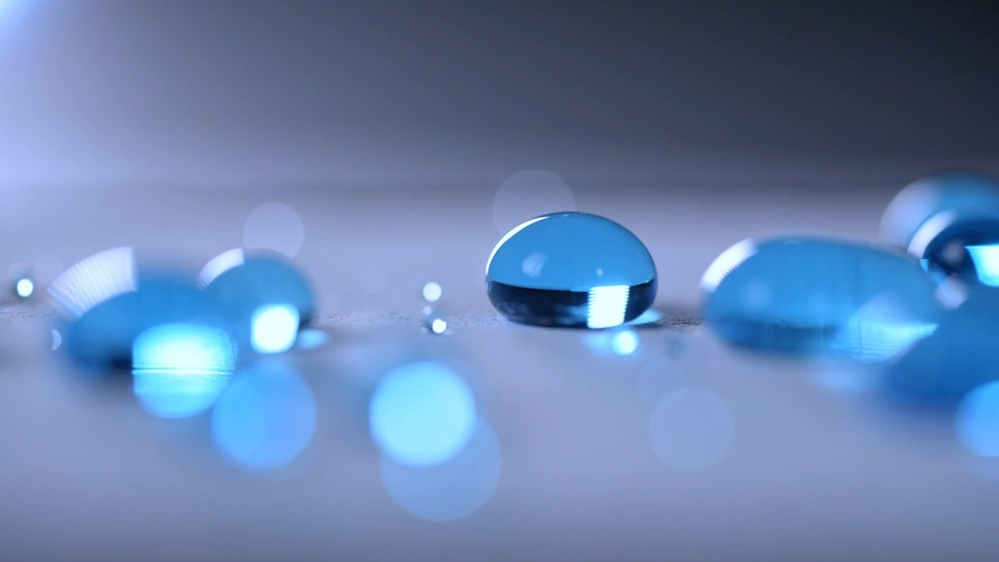
It does this while also remaining highly breathable, allowing water vapour to naturally breathe out from underneath the coating. This one-way avenue for moisture keeps exterior walls dry which provides the products with ultra long-lasting durability. Our nano-technology can repel water while remaining highly breathable as it lines to pores of exterior walls, without sealing these pores. This means while water is too large to pass through the pore, water vapour as a gas can freely travel through the pores.
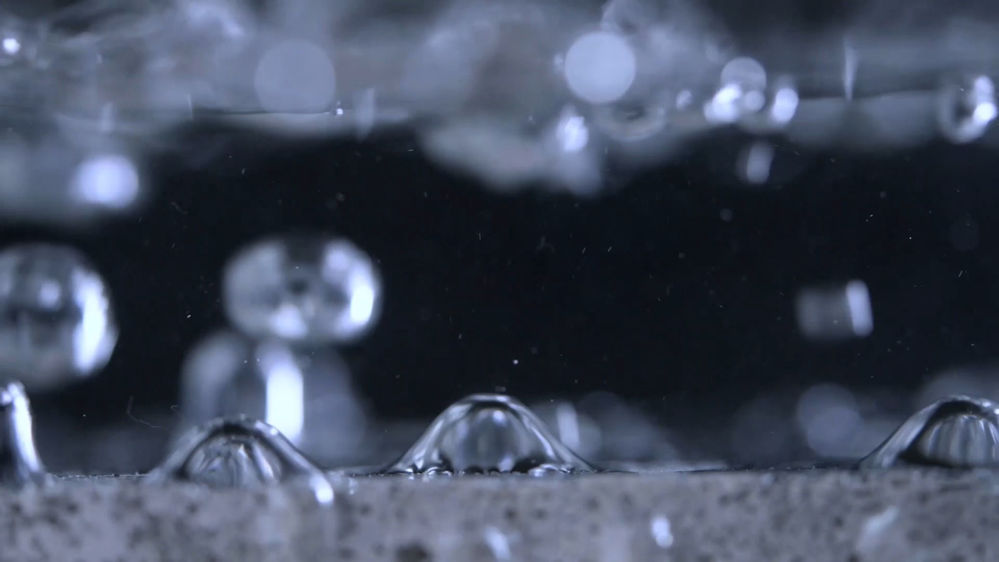
Emperor Paint products were independently tested by a UKAS accredited laboratory in a 25 year accelerated weathering process in order to establish their long-term performance in harsh weather conditions. After the 25 year weathering period was complete, both Emperor Masonry Paint & Emperor Masonry Creme were shown to have no deterioration in performance or appearance in any way. This means that they will far exceed a 25-year performance, which is why both products come with a lifetime guarantee.
In the same weathering process, the products were also tested to identify their water resistance, breathability and heat retention. Firstly, both products were found to prevent water absorption by up to 96%, helping to keep the exterior wall dry for the 25-year period. They were also found to have an SD value of 0.01 (Emperor Masonry Creme) and 0.03 (Emperor Masonry Paint). As SD value is a way to measure the breathability of a surface, with anything having as SD value of under 1 being highly breathable by British standards. This showed that Emperor Paint products had no impact on the breathability of the wall, ensuring water vapour could naturally escape and helping to keep the material dry. Finally, the masonry walls treated with Emperor Masonry Paint & Emperor Masonry Creme were found to be up to 6°C warmer on average when compared to the masonry wall left untreated. This is because moisture content of 5% can reduce the thermal performance of a material by 50%. By keeping walls dry, Emperor Paint products help improve their heat retention. With the evidence from the testing, Emperor Paint products were verified by the Energy Saving Trust following their independent review process.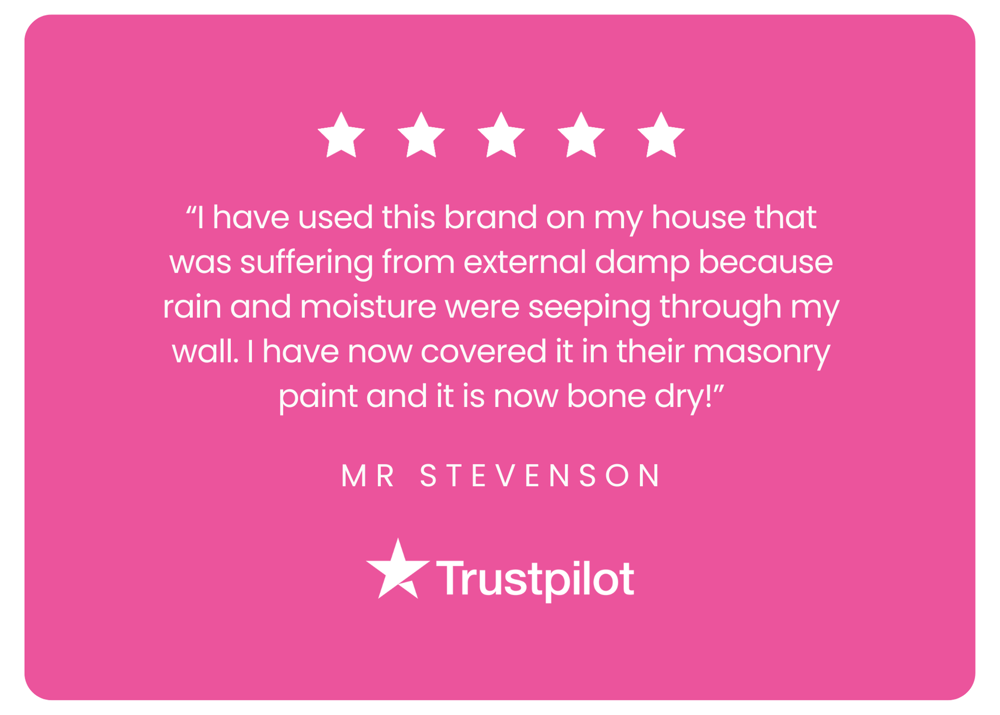
What is crucial to note is that this is not just a solution for properties that currently suffer from water ingress, but it is a preventative measure for those properties that do not suffer. As we have discussed, a common route cause of brick deterioration & decay is moisture. By treating exterior walls before they become susceptible to moisture, you will prevent any future damp damage to your home's structure.
By keeping exterior walls dry, you have a number of other benefits. Firstly, the water repellent surface that Emperor Paint products create also form a self-cleaning surface on the exterior wall. This is because any dirt that lands on the surface is simply washed away with any rainfall. Furthmore, as lichens and other fungal growth require moisture to grow, by keeping walls dry, Emperor Paint products discourage this growth, keeping walls looking clean & pristine. Other benefits include preventing discolouration, penetrating damp & resistance against UV degradation.
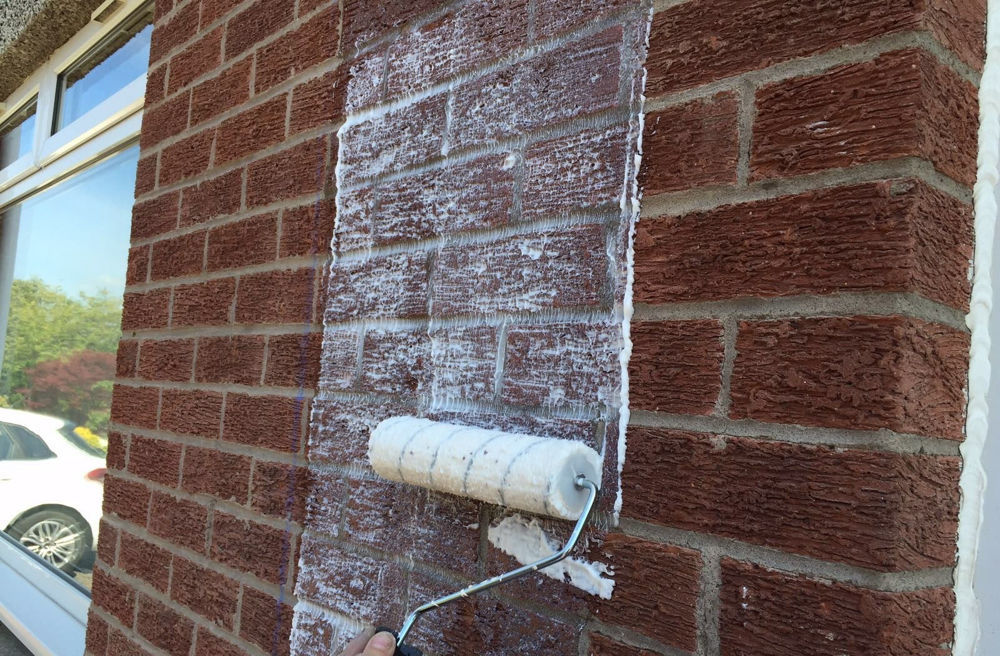
Emperor Masonry Creme
As we mentioned, this is a perfect solution for 'penetrating damp' however not for 'rising damp'. Rising damp only starts at the bottom of brickwork, working it's way up. If this is the case with your property, this will require a different solution to penetrating damp. The moisture from rising damp comes from the ground, and is often caused by the damp proof course failing. If you have damp that is slowly rising up the exterior wall of your home, seek a professional in damp proof courses.
Solutions For Other Areas Of The House
If an investigation does not show any signs of water ingress on exterior walls, then it is crucial to analyse any other potential causes.
WINDOWS
If you have identified leaking windows to be a problem, caused from gaps around the window frame, then there are a few options for solutions. The solution depends on the location of the fault. If the gap is between the window frame and the glass, then re-sealing the gaps may be in order. If the gap is between the window frame and the exterior wall, then you will have to re-point this gap. Both of these can be done either by yourself or by a professional, depending on your level of confidence.
ROOF AND GUTTERS
Examine your roof & gutters for any signs of damage. Check any tiles or cracks where water may be penetrating the roof or check any gutters for blockages. If you are not confident with this type of investigating, seek a professional who can examine the roof. Depending on the problem, the professional will be able to give you the best advice on how to treat the problem.
How Do I Resolve The Interior Damp?
Once the source of the water ingression has been resolved, the next step is to resolve the interior damp. To supercharge the drying of the room, you may wish to use a dehumidifier to assist with the drying of moisture. If you do not have a dehumidifier then do not worry, the moisture will gradually reduce. In most cases, simply apply an interior damp sealer or a stain blocker to damp patches & once it has dried, decorate as you wish.
Frequently Asked Questions
Q. HOW DO I APPLY EMPEROR PAINT PRODUCTS?
Emperor Masonry Paint is applied in the same way as any exterior paint. Once the surface is sound & clean, you can apply two-coats of Emperor Masonry Paint to the surface, if the surface has been previously painted. If the surface has not been previously painted, you must apply one-coat of Emperor Exterior Primer to the surface first. This ensures that the masonry paint does not soak into the substrate and provides extra adhesion for the paint to the wall. The coverage of Emperor Masonry Paint is 5-6m2 per litre, but on rough surfaces such as pebbledash this is reduced down to 3m2 per litre. You do not need a primer if you are using Emperor Masonry Creme.
Emperor Masonry Creme is designed solely for use on bare surfaces, such as brick, stone & concrete. You cannot apply it to a previously painted surface as it is an impregnating system. This means that it is applied to the wall and as it dries, penetrates into the wall. After a matter of hours, the coating is invisible as it has chemically bonded to the masonry. This means it leaves no signs of application in any way, either in colour or by leaving a sheen on the surface. This is in contrast to brick sealers that create a film on the surface of masonry. Emperor Masonry Creme should be applied using a brush or roller at a coverage of 3-5m2 per litre and left to dry.
Need more information? Read our guide on how to apply Emperor Masorny Paint or our guide on how to apply Emperor Masonry Creme.
Q. HOW DO I CLEAN THE SURFACE BEFORE TREATING?
Start by cleaning the surface down using a wire brush or a hose pipe. This will remove any surface debris and leave the wall free of dirt. If there is any green or fungal growth on the wall, it is crucial to apply a fungicidal cleaner to the wall before painting. This kills any growth that if left on the wall could cause the paint to fail. Simply apply the cleaner using a wire brush and leave it to completely dry. Wash the cleaner off if you are using Emperor Masonry Creme or leave it on if you are using Emperor Masonry Paint. This is because the coloured Emperor Masonry Paint will cover any of the residue left by the cleaner.
Q. DID WATER INGRESS CAUSE MY PREVIOUS PAINT TO PEEL?
If you have a masonry paint or waterproofing treatment that has previously failed, this could be down to a number of reasons. Firstly, it may simply be down to the fact that you have not prepared the surface sufficiently before application. It could also be down to not using a highly breathable waterproofing treatment. In this case of masonry paints, if you have used an acrylic masonry paint, which is the most common form of masonry paint, this has low breathability which may explain the paint failing. Remove the paint where it is blistering & flaking back to a smooth edge. Once this is done, you can then apply Emperor Masonry Paint. The highly advanced technology chemically bonds to the previous coating and can in fact improve the breathability of the acrylic masonry paint underneath, ensuring the blistering does not occur again. This is also aided by providing waterproof protection that prevents moisture entering the substrate.
Have any more questions regarding water ingress? Our team of experts is on hand to assist you with any questions you may have. Talk to one of our experts today or prevent water ingress with our clear masonry cream or coloured masonry paint.

